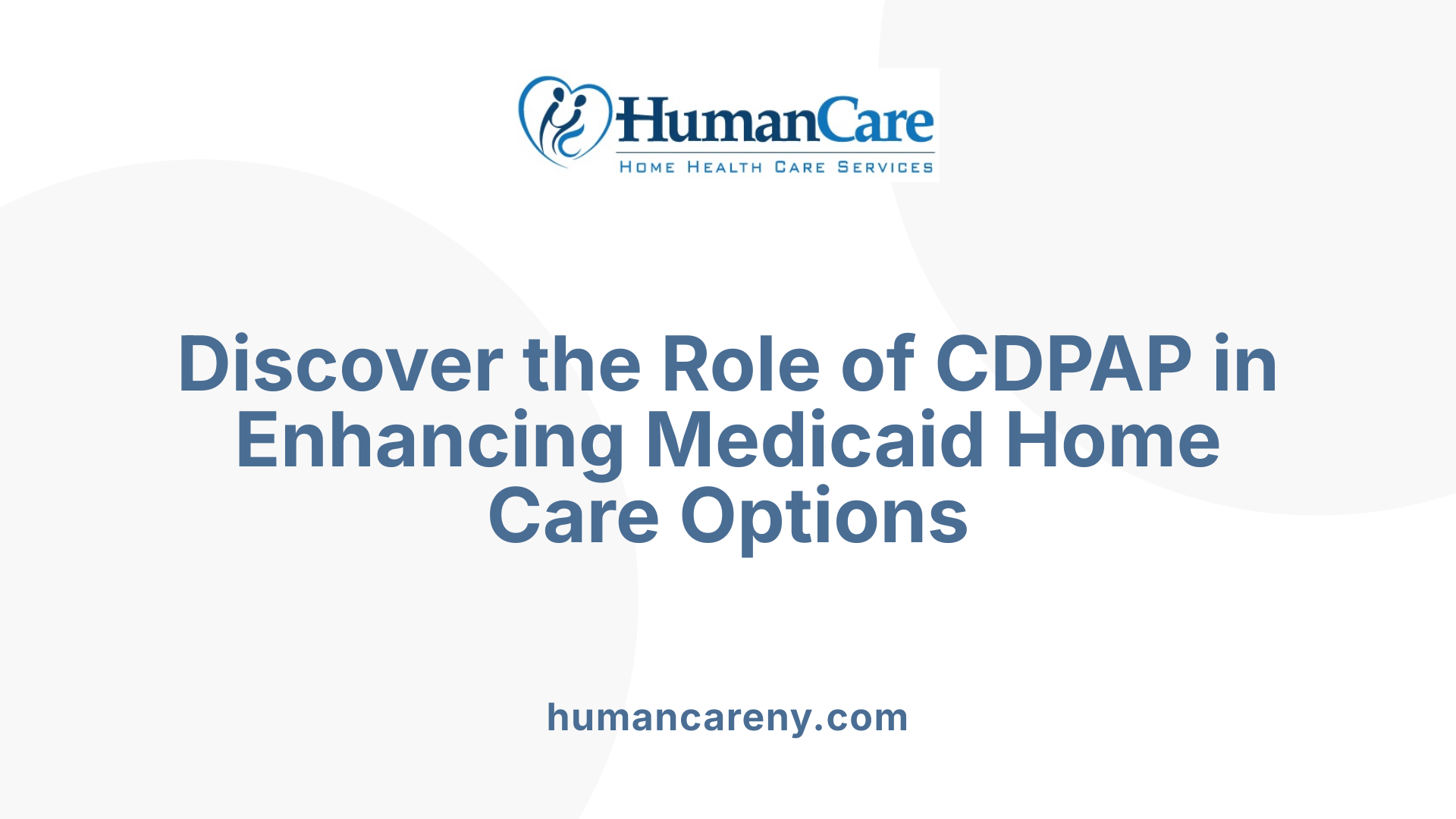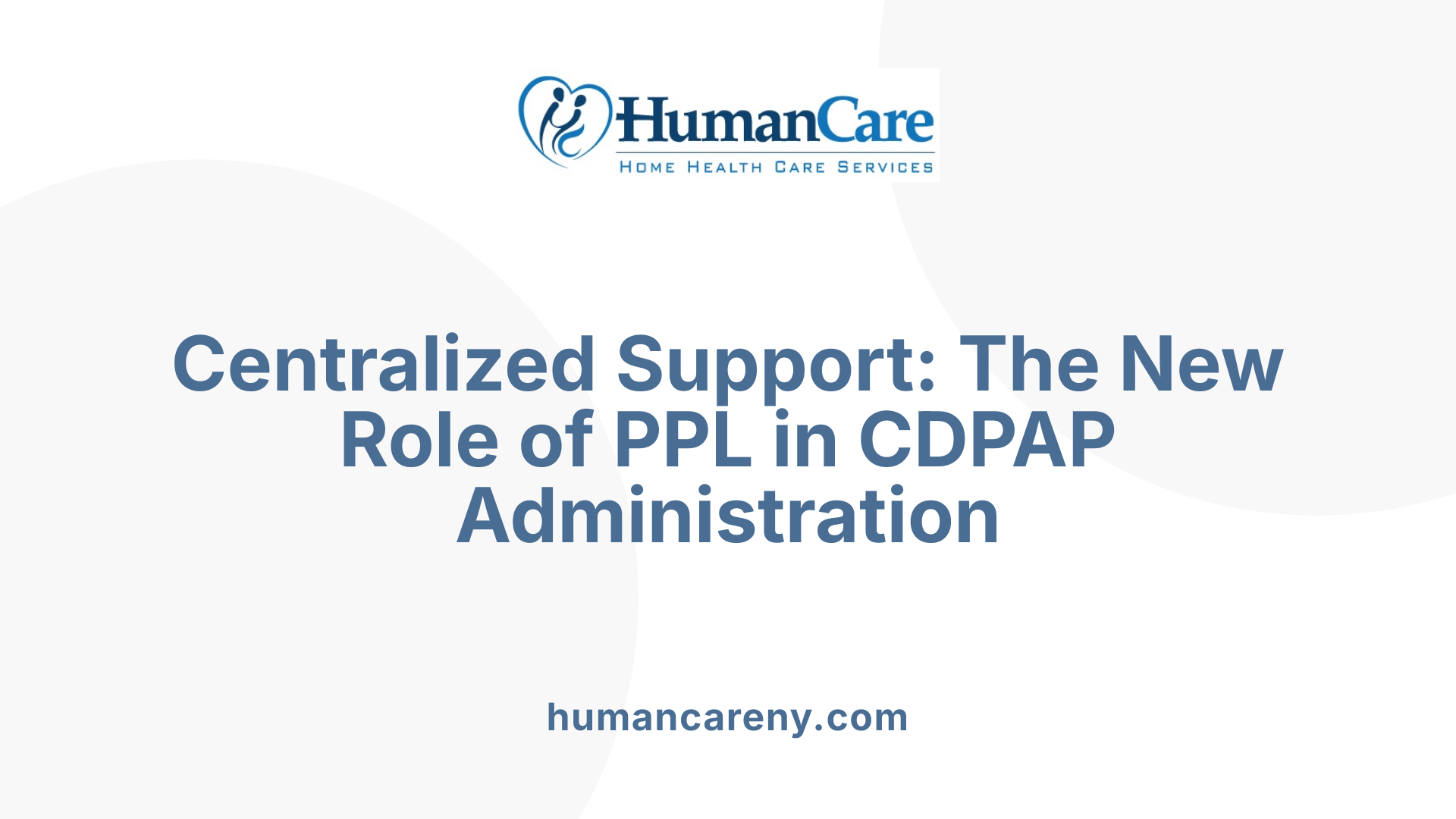Introduction to Medicaid Waiver Program Renewals and CDPAP
Medicaid waiver program renewals can be complex, especially for those relying on home care services like the Consumer Directed Personal Assistance Program (CDPAP). This article explores essential aspects of navigating Medicaid waiver renewals with a focus on CDPAP, detailing eligibility, program changes, recipient responsibilities, and the administrative framework that supports these vital home care services.
Overview of CDPAP and Its Role in Medicaid Waiver Programs

What is CDPAP?
The Consumer Directed Personal Assistance Program (CDPAP) is a Medicaid-funded initiative in New York State designed to offer home care services to eligible recipients. It empowers consumers to hire and manage their own personal caregivers, which can include friends or family members, except spouses, designated representatives, or parents of minors. This program enhances autonomy by allowing individuals to self-direct their care or have a designated representative oversee it.
Role of CDPAP in Medicaid Waiver Programs
CDPAP plays a crucial role within Medicaid waiver programs by providing a flexible option for home care. Unlike traditional home care services, CDPAP recipients or their representatives are responsible for recruiting, training, supervising, and managing their personal assistants. The program targets Medicaid-eligible individuals with stable medical conditions who require assistance with activities of daily living (ADLs). It also supports continuity of care by integrating with New York's managed care and local Medicaid agencies, ensuring eligibility aligns with broader home health services and waiver criteria.
Types of Home Care Services Covered under CDPAP
Under CDPAP, personal assistants are authorized to perform a wide range of home care services, including skilled nursing tasks such as suctioning tracheostomies, administering insulin injections, and managing oxygen or medication. This program covers assistance with activities of daily living, personal care, as well as household tasks like housekeeping. It complements other Medicaid-funded programs like Personal Care services and the Long Term Home Health Care Program, all aimed at helping individuals maintain their independence at home instead of institutional settings.
Eligibility Criteria and New Policy Changes Effective 2025

What Are the Eligibility Requirements for CDPAP?
To qualify for the Consumer Directed Personal Assistance Program (CDPAP) in New York, individuals must be Medicaid-eligible and demonstrate a stable medical condition that warrants home care services. Additionally, they must have a documented need for assistance with their care, either by managing on their own or through a designated representative. CDPAP recipients are typically those eligible for services from a certified home health agency, AIDS home care program, or similar personal care services. This program empowers recipients to hire their own personal assistants including family or friends (excluding spouses and parents of minors).
What Are the Updated Eligibility Rules Starting September 1, 2025?
Beginning September 1, 2025, CDPAP eligibility criteria will undergo stricter regulations. Consumers must now provide evidence of a stable medical condition along with the requirement for assistance in specific Activities of Daily Living (ADLs). This move ensures that recipients truly require personal assistance to manage everyday tasks at home. The new rules aim to streamline eligibility and align assistance with demonstrated care needs.
What Constitutes a Stable Medical Condition and the ADLs Assistance Requirement?
A stable medical condition generally refers to a health status where the individual’s care needs are ongoing but managed without frequent medical crises. Under the updated CDPAP guidelines, the consumer must require help with certain ADLs such as bathing, dressing, eating, mobility, or medication management. Evidence of needing such assistance confirms the appropriateness of CDPAP services and supports Medicaid’s goal to provide personalized home care effectively.
These eligibility refinements, part of the broader 2025 policy changes, will shape how New Yorkers access and manage home care services, ensuring that support is directed to those with verified care requirements.
Consumer Control and Responsibilities in CDPAP

What is the Consumer's Role in Hiring and Managing Caregivers?
The Consumer Directed Personal Assistance Program (CDPAP) places significant control in the hands of Medicaid recipients. Consumers or their designated representatives are empowered to recruit, hire, and direct their own personal caregivers. This self-directed approach allows recipients the freedom to choose trusted individuals, ensuring that the care they receive aligns with their personal preferences and needs.
Who Can Be Hired as a Caregiver?
CDPAP permits consumers to hire a broad range of personal assistance providers, including friends and family members. However, there are important restrictions: spouses, designated representatives, and parents of minor children are excluded from serving as aides. These guidelines help to ensure appropriate caregiving arrangements while maintaining consumer autonomy.
What Are the Consumer’s Responsibilities in Managing Caregivers?
Consumers or their representatives take on several critical responsibilities. They are tasked with training the personal assistants, supervising their work, and determining when to terminate services if necessary. Additionally, consumers must arrange for backup coverage to guarantee continuous care during absences or emergencies.
Managing payroll is another vital duty. While the Statewide Fiscal Intermediary, Public Partnership LLC (PPL), handles administrative tasks like payroll processing and tax withholdings, consumers must maintain accurate employment records. This partnership supports consumers in meeting their obligations without bearing the full administrative burden.
Through CDPAP, individuals gain enhanced control over their home care while embracing the responsibilities that come with managing personalized assistance.
Role of the Statewide Fiscal Intermediary in Program Administration

What is the Fiscal Intermediary Transition in CDPAP?
Starting in 2025, New York State will implement a major policy change in the administration of the Consumer Directed Personal Assistance Program (CDPAP). This change involves consolidating the administration under a single Fiscal Intermediary (FI), Public Partnership LLC (PPL), replacing the more than 600 different FIs currently operating throughout the state. PPL will manage key administrative responsibilities and subcontract with facilitators to continue providing localized support.
What Administrative Services Does the Fiscal Intermediary Provide?
The Fiscal Intermediary plays a critical role in ensuring smooth program operations by handling tasks that include payroll, tax withholdings, and maintaining employment records for personal assistants. All CDPAP recipients must work with PPL as their FI, which ensures standardized processing of payments and legal compliance regarding employee benefits and taxes.
How Does the 2025 Policy Change Affect Current Recipients?
Despite initial concerns and rumors surrounding the 2025 transition, current CDPAP services will not be interrupted or negatively affected. Eligibility criteria and available services will remain consistent for existing and new recipients, provided they are aligned with the new centralized FI. This ensures consumers and their chosen caregivers experience continuity in support and assistance without administrative disruption.
This centralized administration aims to improve efficiency and accountability within the CDPAP, making it easier for Medicaid recipients across New York State to manage their home care services without administrative complexity.
Integration with Other Medicaid-Funded Home Care Services

How does CDPAP integrate with Managed Long-Term Care (MLTC) plans?
CDPAP works alongside Managed Long-Term Care (MLTC) plans to offer recipients more control and flexibility in their home care. All counties in New York are mandated to provide CDPAP through MLTC or managed care plans, ensuring wide availability. Eligible consumers may choose CDPAP instead of, or in addition to, services provided by MLTC plans, granting them the ability to hire personal assistants, including family or friends (excluding spouses and parents of minors).
What are the access points for CDPAP through managed care or local Medicaid agencies?
Consumers can access CDPAP services through their managed care or MLTC plans, as well as through local Medicaid agencies. The application process varies based on the consumer's coverage. Managed care enrollees apply through their plan, while others may use local Medicaid agency resources, including the NYC Human Resources Administration’s Home Care Services Program. This ensures a streamlined and flexible approach to receiving necessary home care services.
What other Medicaid-funded home care programs are available alongside CDPAP?
In addition to CDPAP, Medicaid offers several related home care programs for eligible individuals:
Personal Care Services: Medicaid-funded home care including home attendant and housekeeping services for individuals facing difficulties with activities of daily living.
Assisted Living Program: Provides support for individuals needing a higher level of care but desiring to remain in a community setting.
Long Term Home Health Care Program: Offers nursing, rehabilitative care, and home health aides, typically accessed through hospital discharge planners or Home Care Services Programs.
These programs complement CDPAP by covering a range of home care needs for seniors or disabled recipients, helping them maintain independence outside of nursing homes.
Together, CDPAP and these Medicaid-funded programs create a comprehensive network of home care services designed to support diverse medical and personal needs within the community.
Specialized Skilled Tasks and Care Provided Under CDPAP
What Scope of Tasks Do CDPAP Aides Perform?
CDPAP aides carry out a variety of home care duties that go beyond basic personal assistance. Unlike traditional home care aides, CDPAP aides are authorized to perform certain skilled medical tasks, usually reserved for licensed nurses. This expanded role allows consumers greater control and flexibility in their care.
What Are Examples of Skilled Tasks Handled by CDPAP Aides?
Among the specialized tasks, CDPAP aides are trained to suction tracheostomies, administer insulin injections, and manage oxygen or medication administration. These are complex procedures that require careful handling and knowledge of the recipient's medical needs.
How Do CDPAP Services Compare With Licensed Nurse Care?
While licensed nurses typically provide skilled nursing services, under CDPAP, personal assistants can be delegated to perform these tasks under the direction of the consumer or their representative. This consumer-directed approach shifts responsibility and oversight to the recipient, who manages hiring and supervising the aide, enabling personalized care within the home environment.
This arrangement makes CDPAP unique by allowing consumers to combine skilled healthcare tasks and personal assistance under one program, promoting independence and tailored support.
Supporting Resources and Application Guidance for Medicaid Waiver Programs
What is the Role of the NYC Human Resources Administration Home Care Services Program?
The NYC Human Resources Administration (HRA) offers a Home Care Services Program aimed at helping eligible elderly or disabled individuals remain safely in their homes instead of transitioning to nursing homes. This program is Medicaid-funded and provides access to a variety of services such as Personal Care, Managed Long-Term Care Programs, Assisted Living, and Long-Term Home Health Care. These services include assistance with activities of daily living, case management, nursing, and rehabilitative care — ensuring comprehensive support tailored to individual needs.
Where Can Consumers Find Application Forms and Management Tools?
Consumers seeking Medicaid waiver programs like CDPAP and other home care services can find application forms and management tools readily available on the official HRA website. These resources simplify the application process for long-term care, making it easier for individuals and their representatives to apply for necessary services. Access to these forms ensures timely submission and helps maintain an organized approach to managing home care arrangements.
How Does Official Oversight and Consumer Support Function?
The Office of Special Services provides official oversight of the Home Care Services Program, guaranteeing program integrity and compliance with state and federal guidelines. This government authority ensures that consumers receive reliable support and that services meet quality standards. Furthermore, consumer support mechanisms are embedded to guide individuals through the complexities of Medicaid waiver programs, offering assistance and resources to help recipients secure the care they need efficiently and confidently.
Conclusion: Navigating Renewals with Confidence
Renewing Medicaid waiver programs like CDPAP requires awareness of eligibility updates, consumer responsibilities, and administrative changes. By understanding how CDPAP operates within the broader Medicaid framework and grasping the implications of upcoming policy shifts, recipients can better advocate for their care needs and ensure continuity of vital home care services. Staying informed and utilizing available resources greatly aids in maneuvering through the renewal process confidently and effectively.



